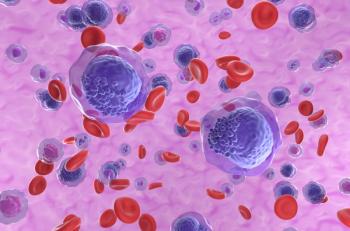
- Applied Clinical Trials-01-01-2005
The Abuse of Man: An Illustrated History of Dubious Medical Experimentation
Weyers, Wolfgang (New York: Ardor Schribendi, Ltd., 2003) 755 pages.
Weyers, Wolfgang (New York: Ardor Schribendi, Ltd., 2003) 755 pages.
This is a BIG book-broad in scope, lots of pages, and full of examples and pictures. It is intimidating and requires of its readers much reflective analysis. It alternatively shocks, rewards, and saddens because it provides so much irrefutable detail about researchers' inhumane treatment of subjects.
In the preface, the author states:
"Only by awareness of man's inhumanity to man medically, and the assessment of the factors that led to and enabled those abuses to be carried out, is there any possibility that physicians and researchers in the future will shrink from the idea of ever perpetrating them."
There are an overwhelming number of examples in the 19th and 20th centuries of deliberate infection of persons with pathogenic organisms (bacteria, viruses, fungi) for the expressed purpose of producing disease including syphilis, gonorrhea, warts, leprosy, and a variety of tropical diseases. Trials of therapeutic interventions were also poorly constructed and the morality of human experimentation was placed outside ethical codes characteristic of civilized living. The guilty parties, all named and pictured in this book, range from almost complete unknowns to several Nobel Prize winners. Even the application of informed consent in some of the most famous experiments in the history of medicine, such as Walter Reed's yellow fever tests in 1900, were flawed due to content and process issues. Not surprisingly, publications of these studies deliberately omitted procedural details that would have been ethically objectionable.
During the first half of the 20th century, German MDs suffering from lack of moral courage and strict obedience to authority committed some of the worst atrocities in the history of medical research. The author, however, is also unsparing in describing Japanese abuses involving anthrax glanders, cholera, and the plague. During and after World War II, Great Britain and the United States also performed plenty of unethical clinical research on prisoners, conscientious objectors, and active duty personnel. What set the Nazi's experiments apart from those of the allies was not the research itself or the quality of it (weak), but the "woeful lack of respect given to an individual test subject by the Germans."
The author goes on to discuss the infamous Tuskegee study and other stateside experiments at the Willowbrook School, the Fernald State School in Waltham, Massachusetts, and other institutions housing vulnerable populations. These studies, like the Nazi experiments, also focused on so-called "undesirables."
The last few chapters of the book focus on IRBs, recent University of Pennsylvania and Johns Hopkins deaths, the slamming of the door on prison research, the birth of bioethics and the Declaration of Helsinki. The book concludes with a fascinating discussion of ethical relativism:
"After his experiments on mentally disabled children had been uncovered, the dermatologist, John S. Strauss, stated that 'to judge something that took place in the 1950s by the standards of the late 1990s is inherently futile and, in many cases, unfair.'"
The author points out that to accept this position, one would have to believe that the medieval practice of torturing criminals, 18th and 19th century slavery, and Nazi medical research were simply acceptable practices of that era that have since been abandoned. The author contends that past experimentation must be identified and cannot be evaded.
There are only mild criticisms of this work. It relies excessively on dermatology research to the exclusion of other therapeutic areas. It fails to mention the International Conference on Harmonization and FDA GCP rules. And it does not condemn administrators and nonphysicians for their contributions to abusive research.
This book should be read with Jonathan Moreno's Undue Risk: Secret State Experiments on Humans to obtain a more complete picture of contemporary unethical human experiments. It is recommended for readers who wish to more fully understand the reasons why GCP is so important.
Douglas R. Mackintosh, DRPH, MBA, MS HYG, is president of GCPA, Inc., 12208 Fairfax Station Road, Fairfax Station, VA 22039, (703) 988-9080, fax (703) 988-9082, e-mail: GCPadits@aol.com, http://members.aol.com.gcpaudits.
Articles in this issue
almost 21 years ago
Pediatric Drug Developmentalmost 21 years ago
Paying the Price of Being an Orphanalmost 21 years ago
Drug Safety, Access Top Policy Issues for 2005almost 21 years ago
Pediatric Research: Filling the Gapsalmost 21 years ago
Pediatric Trials: The Impact of U.S. Legislative and Regulatory Effortsalmost 21 years ago
'Community' Input into the Consent Processalmost 21 years ago
eShowcaseNewsletter
Stay current in clinical research with Applied Clinical Trials, providing expert insights, regulatory updates, and practical strategies for successful clinical trial design and execution.






.png)



.png)



.png)
.png)
